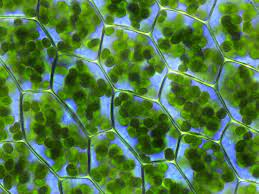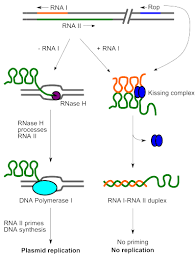Bacteria are referred to as prokaryotic organism that have single cell and have existence in million in the environment.
With regards to what is plasmid DNA in bacteria, it is a small yet circular in shape and doubles stranded molecule of DNA that is places quite distinct from the chromosomal of the cell DNA.
The word plasmid was first kept in place by Joshua Lederberg in 1952. The term was forts observed in paper and he was the one to get it published with also explain the experiments that were taken in consideration. It was conducted on the species of salmonella bacteria.
The plasmids in the cell of prokaryotes concerned with the bacteria exist in its natural form and also occur in some of the eukaryotes. Most often the genes that are carried out in the plasmids actually do provide the bacteria with some of the advantages over genetics like that of being antibiotic resistance.
The very own function of the plasmid DNA in bacteria is to help the organism in its survival process. It helps in getting the other host cells killed by generating proteins that are toxic and also gives a cover to its own cell by making resistance or also by killing the unknown organism. It also deals with DNA replication in harder state.
Plasmids not just in bacterial cells but also in general play a good role in getting the bacteria to evolve and getting itself used to the surrounding that keeps on changing. They also carry on genes that have vital traits for the usage of the bacterial cell. The bacteria having plasmids are resistant towards antibiotic and each also get to form colony.
The bacterium is held responsible in getting to take the foreign DNA in the process and is termed as transformation. It takes place after restriction ligation and digestion and converts the newly generated plasmid to the bacteria. After this, the bacteria are selected and kept on antibiotic plate.
Types of plasmid DNA in bacteria
Then bacteria having plasmids are important for them helps in getting the bacteria adapt and evolve via the change on surrounding.
Concerned with what is plasmid DNA in bacteria, The plasmids are bacteria are defined by their function and are four in their types. Plasmids can be found in both prokaryotes and few of the eukaryotes.
The types of plasmids are
Resistance plasmids
These plasmids buy their definition carry many or only one of the genes that are antibiotic resistance.
They are mainly connected by the gens that encode the harmful determinants, many of the specific enzymes or also are resistance to the heavy materials that are toxic. The resistance genes are located on plasmids which have the ability to transfer in vitro.
Plasmids add up to being antibiotic resistance solving two problems. It allows the scientist to easily get to known about plasmids that have the bacteria when the cells that grows on specific media and then gets to provide with a pressure to keep the plasmid. There is also pressure on bacteria to keep in the plasmids. This implies that a bacterium can always be said to be resistant for multiple antibiotics at one time by picking up a single plasmid.
A resistance plasmid is actually small element which is placed out of the chromosome and also carries the information of DNA that helps in fighting against the antibiotic drugs. An example of it can be the pBR322 that helps in transferring of the gens for the ampicillin and tetracycline resistance.

Virulence plastids
They are in general not small but are large and of size more than 40kb and are actually low copy stuff.
They helps in encoding the genes that help I promoting the ease to bacteria in many determine situations which they often impose the cost of its fitness to the host. Plastids are said to be organelles that are plant-specific and arise from the olden endosymbiosis of a bacterium that is photosynthetic.
The plasmids do actually carry the genes that are resistance and virulent ones that shall disseminate via the S.aureaus gang by the transfer of horizontal gene process. They are also termed to be self-replicating with having extra chromosome. Some example of it is the phagocytosis, the receptors binding the cell of the host.
The elements that are considered to be extra in the chromosomes are actually the keep agents that help in changing of the microbial organism. They helps in spreading of many traits which also includes the resistive, improving fitness and also is resistance to the microbes and helps in metabolism of the rate product.

Degradative plasmids
These are the ones that carry the genes that get to confer above the host bacteria the boon of degrading recalcitrant compounds that are organic.
They are mostly not seen much in the nature. The genes on the TOL plasmids, which consist of the pWWO and the nab related to t along with the dmp genes are actually enabled in comparative studies.
It has been seen in decades that there are few usage of the temperate phages which are seen in the host genome as a part of the extra chromosome that helps in getting them replicate within the cycle of cell. the phages are also termed to be plasmids for this every purpose.
These degradative plasmids tend to aid mostly the host microbe in getting to work out the unknown molecules like that of salicylic acid and toluene. These are somehow able to go for horizontal coverage and the find any bacteria which are isolated naturally.
Col plasmids
The col plasmids are the antibiotic types of plasmid that helps in coding for the colicining the proteins that gets to kill the bacteria.
There are also col factors which determine the making of the proteins called the colicins. They are actually helpful in antibiotic use and can also help in killing bacteria and also are resistance to them.
They make up the bacitracin that are said to be the proteins that get to kill the rest of the bacteria and thus are also let to defend the host bacteria. Bacteriocins are seen in most type of bacteria which consists of the E.coli, the common one and it gets this from the plasmid ColE1.
They are made of circular molecules of the DNA and are on occasions the plasmids are seen to be linear or may be made of RNA. They are also mall in size and some are large with less number of copy. The copy number varies in the all the cells.

Structure of plasmid in bacteria
Plasmids were first experimented to be seen in the salmonella bacteria in 1952 with tons of experiments being performed in hand.
The plasmid is circular in shape and has replicons that have an origin of replication in them and thus are said to be self-replicating. They also have point for being resistance towards antibiotic and helps in bacterial survival.
The plasmid has a vital role in the technological breakage. They have made a steal part in developing the molecular biotechnology; they act as a transport system that introduces the foreign DNA inside of the bacteria.
Along with the above mentioned usage of the plasmids and with considering the question of what is plasmids DNA in bacteria, plasmids help in getting the DNA delivered that consist of genes for getting it antibiotic resistance and is also a therapeutic stage for infections, and genetic caused disease.
The plasmids can have variety of functions just like they can help facilitate the process of DNA replication, get to improve the survival rate of the organism and then also carry on with at least single gene and mostly the genes are useful to the host species.
The plasmids do actually carry a minimum of a single gene with also providing the bacteria its ability to help fixing of nitrogen. The plasmids can be present each of the cells in many numbers varying from each type and then also ranging from one to numerous.
The larger the plasmids the lower is the number of copies in them. There are also some presences of plasmid which have no effect and are zero observed on the phenotype of the host. Such type of plasmids is called to be the cryptic plasmids.
Also Read:
- Plant like protists examples
- Are membrane proteins carrier proteins
- Bacterial cell type
- Ecosyetm examples
- Phytoplankton examples
- Is dna replication bidirectional
- Do bacterial cells have cytoplasm
- Is enzyme a protein
- Forest ecosystem example
- Do mitochondria have a nucleus
I am Ankita Chattopadhyay from Kharagpur. I have completed my B. Tech in Biotechnology from Amity University Kolkata. I am a Subject Matter Expert in Biotechnology. I have been keen in writing articles and also interested in Literature with having my writing published in a Biotech website and a book respectively. Along with these, I am also a Hodophile, a Cinephile and a foodie.